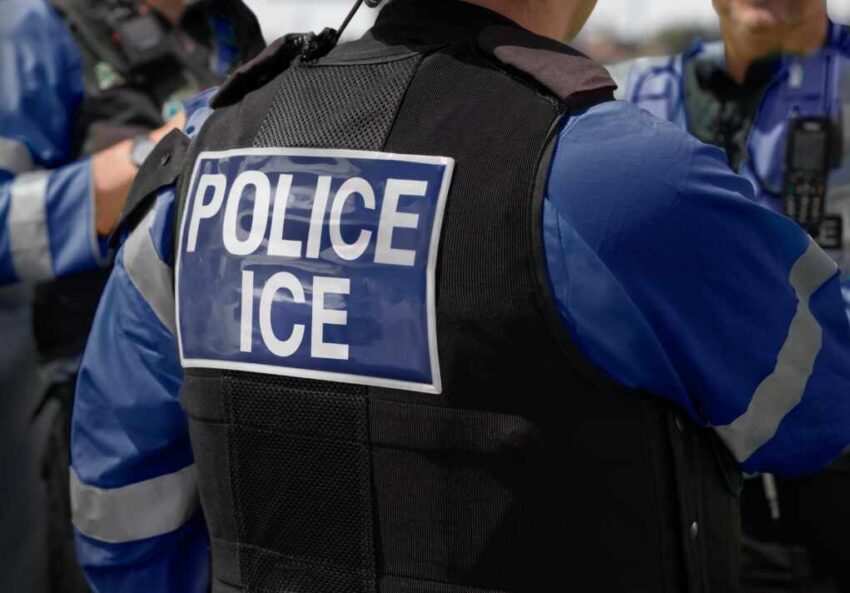A Chicago father’s arrest by ICE without a judicial warrant has triggered a federal lawsuit challenging the agency’s tactics and reviving debate over constitutional protections and immigrant rights.
At a Glance
- Abel Orozco, a Chicago-area father, was arrested by ICE without a warrant outside his home.
- The arrest revives scrutiny of ICE’s enforcement methods and their constitutional implications.
- A lawsuit challenges the return of warrantless arrests post-expiration of a 2018 legal settlement.
- The case could establish new legal boundaries for federal immigration enforcement.
- The outcome may influence national policy and community trust in law enforcement.
A Community Rattled by Old Habits in New Times
In January 2025, Abel Orozco, a father and small business owner from suburban Lyons, Illinois, was arrested by ICE agents outside his home. The agents, reportedly looking for another family member, detained Orozco without a judicial warrant after verifying his identity via his driver’s license. The incident was recorded by his son, and the video quickly spread across social media, fueling public concern and activism in Chicago’s immigrant communities.
Orozco’s arrest was part of a broader ICE operation that reportedly detained at least 25 people, including U.S. citizens, without judicial warrants. These tactics resemble enforcement methods used prior to the 2018 Castañon Nava settlement, which had imposed limitations on warrantless ICE actions in Chicago until its expiration in 2022. Community advocates have raised concerns that such practices could undermine constitutional protections, particularly regarding Fourth Amendment rights against unreasonable searches and seizures.
Watch a report: ICE Arrests in Chicago Spark New Legal Battle
The reemergence of these tactics has prompted civil rights groups and legal advocates to file a federal lawsuit on Orozco’s behalf. The legal challenge asserts that ICE’s warrantless arrests violate constitutional due process and the Fourth Amendment. Plaintiffs are seeking not only Orozco’s release but also judicial review of ICE’s post-settlement enforcement conduct and potential reinstatement of protective policies.
Legal Showdown: Constitution vs. Bureaucratic Muscle
The central legal question is whether federal agents can detain individuals without judicial approval and complete administrative paperwork afterward as a form of post-hoc justification. Orozco’s legal team contends that such actions exceed the limits of federal authority and erode constitutional safeguards. ICE, by contrast, has defended its practices, citing operational demands and asserting compliance with existing laws.
Judge Jeffrey Cummings, presiding over the case, has indicated that the breadth of the claims and the constitutional stakes warrant serious scrutiny. The lawsuit could clarify the extent to which federal enforcement agencies must adhere to judicial warrant requirements, especially in urban areas where prior legal settlements had previously curbed similar actions.
For immigrant families in Chicago, the human impact is substantial. Orozco’s family reports financial strain and emotional distress, compounded by uncertainty surrounding his legal status. Similar stories have surfaced from others affected by the same operation, underscoring broader community concerns about trust and transparency in federal law enforcement.
The National Stakes: Precedent, Policy, and the “New Normal”
The implications of this legal battle extend beyond Chicago. If the courts side with Orozco, the decision could reshape ICE’s operational standards nationwide, reinforcing judicial oversight and limiting warrantless arrests. Conversely, a ruling in favor of ICE could affirm broader enforcement discretion, potentially setting a precedent for expanded federal powers in immigration-related detentions.
Advocacy groups, including the National Immigrant Justice Center, have intensified calls for greater oversight and policy reforms. Meanwhile, lawmakers and policy analysts are monitoring the case for its potential to influence future administrative and legislative approaches to immigration enforcement.
As the legal proceedings unfold, the case underscores a persistent question in American governance: how to balance national security and public safety with the constitutional rights of individuals, regardless of citizenship status. The outcome may help define the contours of that balance in an era of evolving enforcement strategies and community advocacy.
Click this link for the original source of this article.
Author: Editor
This content is courtesy of, and owned and copyrighted by, https://thecongressionalinsider.com and its author. This content is made available by use of the public RSS feed offered by the host site and is used for educational purposes only. If you are the author or represent the host site and would like this content removed now and in the future, please contact USSANews.com using the email address in the Contact page found in the website menu.








